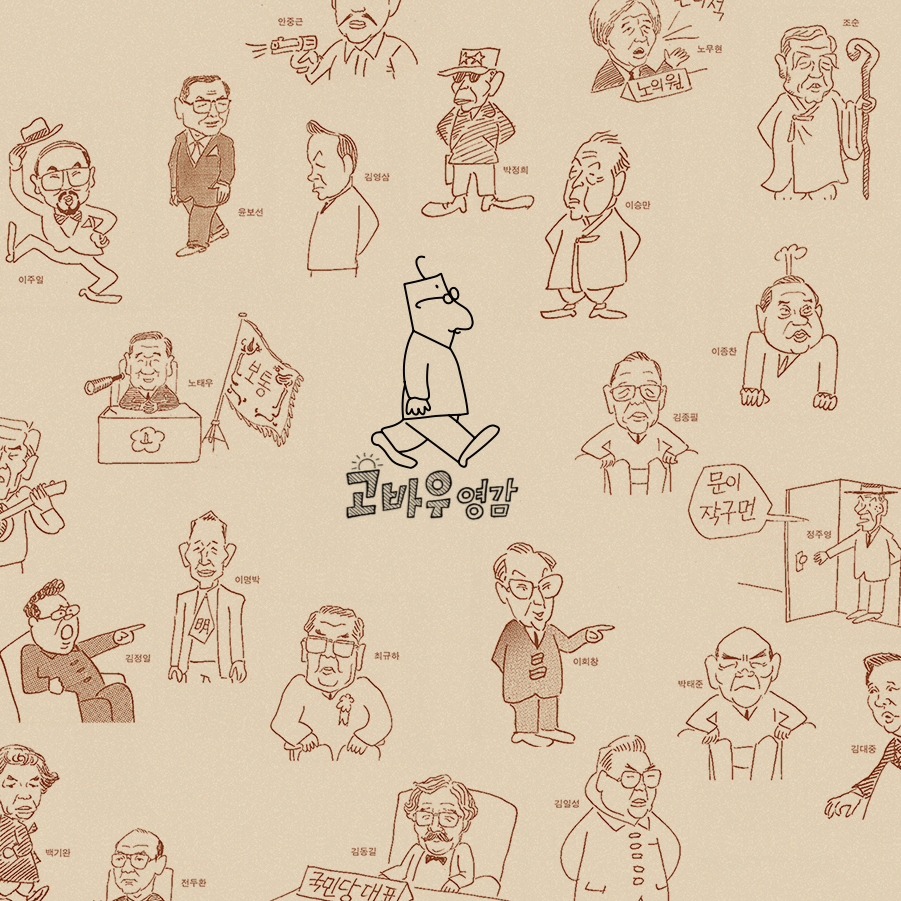
Start asking Korean high-school students what career they want, and — assuming they’re giving the honest answers rather than the prestige answers — it won’t be long before someone says they want to be a comic artist. Or rather, they’ll probably say “webtoon” artist, that being the term of art for the form of comics now seen on screens all around the country. Unlike the horizontal newspaper comic strips I grew up reading in America, webtoons read vertically, from top to bottom, not for any reason to do with the now horizontally-written Korean language but for better scrolling on a cellphone. Though digital, the format also harks back, if inadvertently, to the progenitor of all modern Korean comics: Old Man Gobau (고바우 영감), whose four vertical panels appeared in national newspapers daily for 45 years, from not long after the Korean war until the final year of the 20th century, and whose creator Kim Seong-hwan died last month at the age of 86.
Only the rare teenager has thus actually read Kim’s strip, given that its long run — the longest of any comic strip in Korean history — ended the same year the oldest among them was born. But most of them will recognize Gobau himself, with his round spectacles and the single hair sprouting from his flat head. In one of the 14,139 daily strips in which he stars, Gobau explains that he began with three hairs but lost one during the Japanese occupation of Korea, and another during the Korean war. That Kim made it to the end of his life with much more hair than his signature creation was a stroke of luck, given all he’d experienced: born in Japanese-occupied northern Korea in 1932, he had the misfortune to be 17 years old at the outbreak of the war. It wasn’t long thereafter, in hiding from the North Korean troops sweeping every occupied Southern city for able-bodied young men to conscript, that he came up with the name Gobau, meaning a strong or stubborn rock, which he first adopted as a nom de plume.
“A high-school student and part-time magazine illustrator when North Korea invaded,” journalist Andrew Salmon writes of Kim in The Asia-Pacific Journal, “he recorded the dramatic events of those days in unique style: with that blend of delicate Oriental watercolors and the sensitive pen cartoons that would later become his trademark. After Seoul’s September 28th 1950 liberation, he was employed as a war artist by the Ministry of Defense, but it is his early sketches that capture what it was like to be a civilian on the peninsula in the midst of total war.” The sights Kim saw, drew, and painted included the smoke and flames of the fighting drawing ever nearer; hopelessly ill-equipped South Korean troops, North Korean tanks rolling through a fallen Seoul; his terrified and disconsolate countrymen; and plenty of dead bodies, both Southern and Northern. He then bore witness to the waves of joy and sorrow that accompanied South Korea’s transformation from an impoverished, shell-shocked half of a country into an industrial society that quickly joined the ranks of the world’s most highly developed nations.
Read the whole thing at the Los Angeles Review of Books.